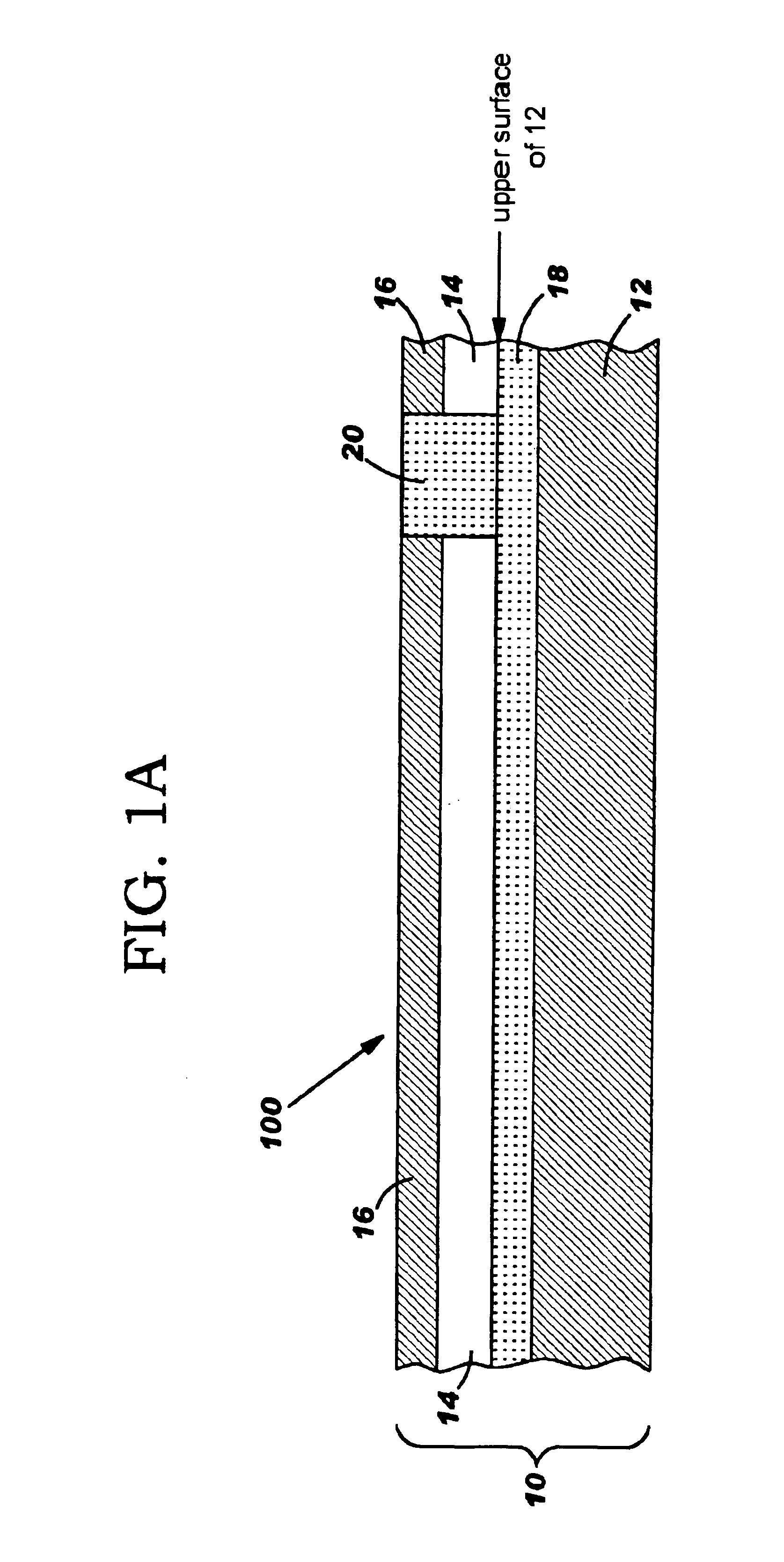BiCMOS technology on SOI substrates
a technology of bipolar and complementary metal oxide semiconductors, applied in the direction of semiconductor devices, electrical apparatus, transistors, etc., can solve the problems of device performance degradation, serious device operational limitations, and low efficiency, and achieve the effect of simple yet reliabl
- Summary
- Abstract
- Description
- Claims
- Application Information
AI Technical Summary
Benefits of technology
Problems solved by technology
Method used
Image
Examples
Embodiment Construction
[0043]The present invention, which provides a method of integrating, BiCMOS technology with SOI technology, will now be described in greater detail by referring to the drawings that accompany the present application. The drawings shown in FIGS. 1A-1G only depict the HBT device area 100. For clarity, the CMOS device areas as well as the other areas of a typical BiCMOS structure are not shown in FIGS. 1A-1G. In FIG. 2 of the present application, an HBT device area 100, a CMOS device area 102 and a passive device area 104 are shown. FIGS. 3A-3M depict the HBT device area 100 and the CMOS device area 102.
[0044]Reference is first made to the initial structure shown in FIG. 1A; the bipolar device region 100 is shown; the CMOS device region 102 and the passive device region 104 are not shown for clarity. Despite not being shown, the CMOS device region and the passive device region would lay to the periphery of the bipolar device region 100 shown in FIGS. 1A-1G. Although a single bipolar de...
PUM
 Login to View More
Login to View More Abstract
Description
Claims
Application Information
 Login to View More
Login to View More - R&D
- Intellectual Property
- Life Sciences
- Materials
- Tech Scout
- Unparalleled Data Quality
- Higher Quality Content
- 60% Fewer Hallucinations
Browse by: Latest US Patents, China's latest patents, Technical Efficacy Thesaurus, Application Domain, Technology Topic, Popular Technical Reports.
© 2025 PatSnap. All rights reserved.Legal|Privacy policy|Modern Slavery Act Transparency Statement|Sitemap|About US| Contact US: help@patsnap.com



